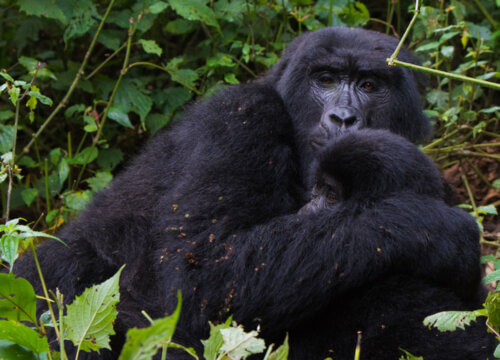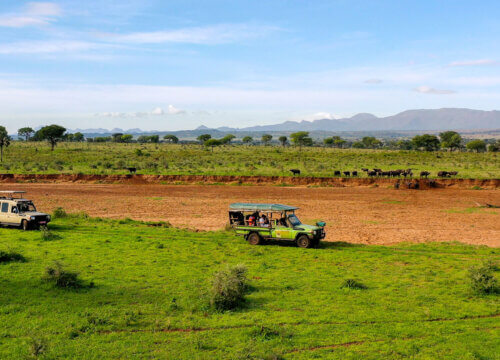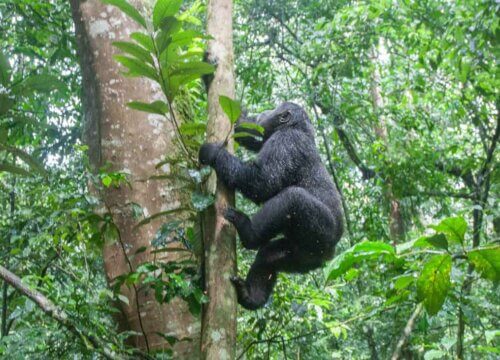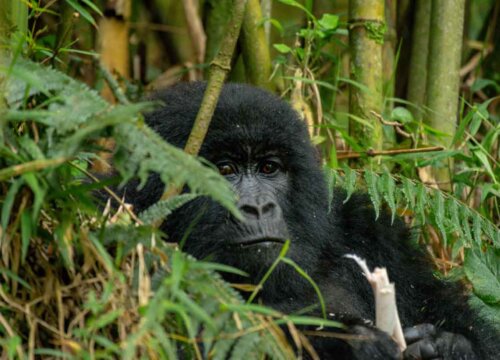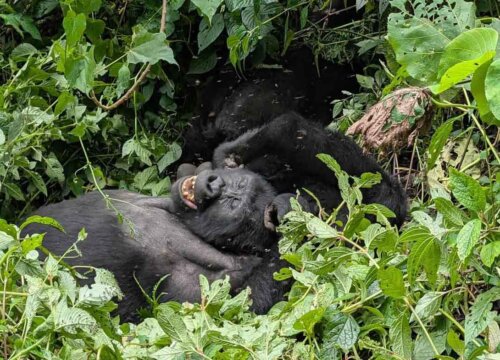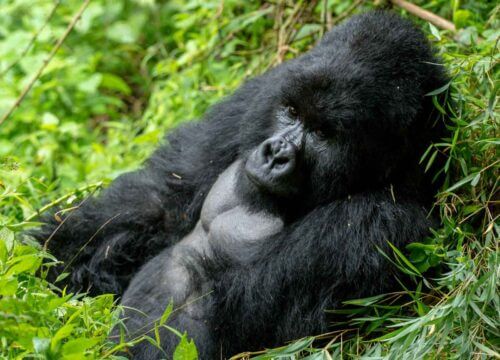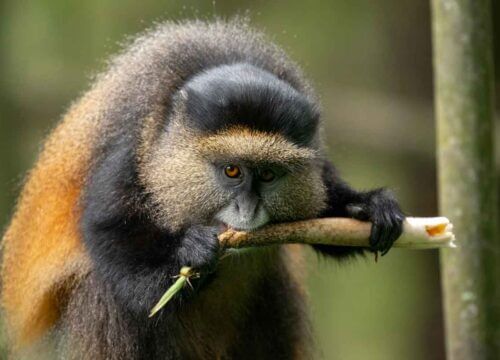What do you need to know when visiting Kibale National Park for the first time?
What do you need to know when visiting Kibale National Park for the first time?
If you are planning visiting Kibale National Park for the first time, here is what you need to know to make the most of your adventure. Kibale National Park is a lush tropical paradise known for its rich biodiversity and vibrant wildlife.
Getting there
Kibale National Park is located in western Uganda approximately 320 kilometers from Kampala, the capital city. The most convenient way to reach the park is by road and the journey usually takes about 5 to 6 hours. Hiring a private car or joining a guided tour with Giant Holiday Safaris are popular options for visitors.
Best time to visit
The park is open year-round but the best time to visit is during the dry seasons from December to February and June to September. During these months, the paths are more accessible and there are many chances of wildlife viewing.
Chimpanzee trekking
Kibale National Park is famously known as the “Primate Capital of the World” being home to 13 species of primates including a significant population of chimpanzees. Chimpanzee trekking is a must-do activity for visitors which offers them a chance to observe chimpanzees in their natural habitat. Chimpanzee trekking permits are required and it is advisable to book them in advance with Giant Holiday Safaris.
What to pack
Prepare for your trek by packing light breathable clothing, steady hiking boots, a raincoat and insect repellent. Do not forget your camera and binoculars to capture the beautiful wildlife and scenery.
Accommodation options
The area around Kibale National Park has a variety of accommodations ranging from luxury lodges to budget-friendly campsites. Whether you prefer a comfortable lodge with all amenities or a rustic tented camp, there is something for every type of traveler.
Wildlife and birdwatching
Beyond chimpanzees, Kibale National Park has an impressive range of wildlife including elephants, buffaloes and various antelope species. Birdwatchers will be entertained with more than 375 bird species recorded here, making it a haven for ornithologists.
Cultural experiences
Enhance your visit by engaging with the local communities. The nearby Bigodi wetland sanctuary offers guided walks led by community members, providing insights into local culture and conservation efforts.
Health and safety
Before traveling, ensure you are up-to-date with vaccinations recommended for Uganda for example yellow fever and hepatitis A. Malaria is present in the area, so taking prophylactic medication and using mosquito nets at night is advised.
Respect nature
While exploring Kibale National Park, remember to respect the environment and wildlife. Maintain a safe distance from animals, follow your guide’s instructions and avoid leaving any litter behind.
Visiting Kibale National Park is an unforgettable experience that connects you with nature in an intimate and profound way. With its beautiful landscapes and incredible biodiversity, this Ugandan gem promises adventure and discovery at every turn.
Chimpanzee trekking experience in Kibale National Park
Chimpanzee trekking in Kibale is a thrilling adventure that allows visitors to get up close and personal with chimpanzees. As you start on your chimpanzee trek from Kibale National Park headquarters, knowledgeable guides lead you through the trails sharing insights about the park’s ecosystem and its inhabitants. The anticipation builds as you listen for the distinctive calls of the chimpanzees echoing through the trees. Once you meet a group of chimpanzees, you will be impressed by their playful antics and social interactions. Observing them in their natural habitat is a magical experience, offering a glimpse into their complex behaviors and intelligence. Chimpanzee trekking usually lasts a few hours, providing ample time to appreciate the beauty of the forest and its inhabitants.
What should you pack on your visit to Kibale National Park for the first time?
Kibale National Park’s climate can be quite humid, so lightweight, breathable clothing is a must. Pack long-sleeved shirts and long pants to protect yourself from insects and the sun.
A waterproof jacket is essential because rain showers are common especially if you are visiting during the wet season.
Packing comfortable steady hiking boots are crucial for exploring Kibale National park’s trails. Additionally, pack a pair of sandals or casual shoes for relaxing at your accommodation.
Do not forget a wide-brimmed hat and sunglasses to shield you from the sun.
Pack a pair of binoculars for spotting the park’s famous primates including chimpanzees and other wildlife.
Pack a small daypack for carrying essentials during your treks. Include a reusable water bottle to stay hydrated, snacks for energy and a basic first-aid kit in case of minor injuries.
Bring your camera with extra batteries and memory cards to capture beautiful pictures
Pack a waterproof bag or case to protect your equipment from unexpected rain.
Ensure that you pack all necessary travel documents including your passport, visa and any permits needed for chimpanzee tracking.
Consult with your healthcare provider before traveling to ensure you have all recommended vaccinations.
Consider bringing a travel pillow and eye mask if you are sensitive to light or noise while sleeping.
Do not forget a journal or book because it can be your companion during downtime.
What is the best time for visiting Kibale National Park for the first time?
Kibale National Park is a year-round destination but the best time to visit largely depends on what you hope to experience. Generally, the park enjoys a tropical climate with two distinct wet seasons and two dry seasons. Understanding these seasons can help you plan your adventure. The dry seasons which occur from December to February and June to September are often considered the best times to visit because the weather is relatively dry and sunny, making it easier to cross the paths and spot wildlife. The chimpanzees are also more active during the dry season as they move out in search of food offering better opportunities for sightings and photography.
On the other hand, the wet seasons from March to May and October to November bring heavier rains that transform the park into a green paradise. While some visitors might not visit during these months due to the rain, there are unique advantages. The forest comes alive with lush vegetation and the birdwatching opportunities are unmatched as migratory birds flock to the area. Additionally, Kibale National Park tends to be less crowded during these months offering a more quiet and private experience with nature. For more information about chimpanzee trekking and permit booking, contact Giant Holiday Safaris.
Explorer More Safaris
- 14-Days Uganda Safari Gorilla Chimpanzees and Wildlife
- 12 Days Gorillas and Chimpanzees Wildlife Safari
- 10 days best of uganda primates & wildlife safari
- 6 Days Gorillas and Chimpanzee Trekking Safari
- 3 Day Bwindi Gorilla Trekking Safari
- 4 Day Uganda Gorilla Trekking and Wildlife Safari
- 4 Days Gorilla Trekking and Adventure Safari
- 5 Days Uganda Gorillas and Chimpanzee Tracking Safari
- 4-Day Rwanda Gorilla Trekking and Golden Monkey Tracking Safari
- 5 Day Gorilla Habituation and Chimp Trekking
- 4-Day Uganda & Rwanda Gorilla Trekking Tour
- 3 Days Bwindi Gorilla Trekking Ugnada from Rwanda
- 10 Days Uganda Primates and Game Safari

